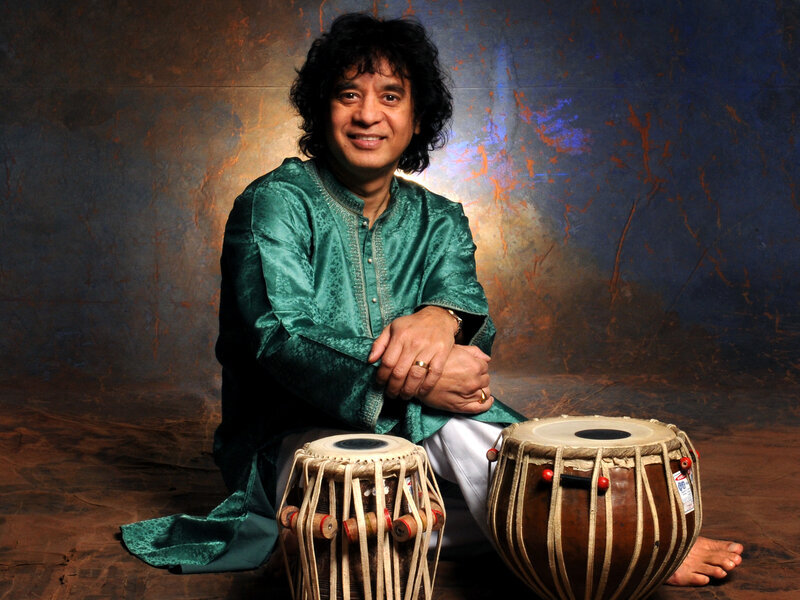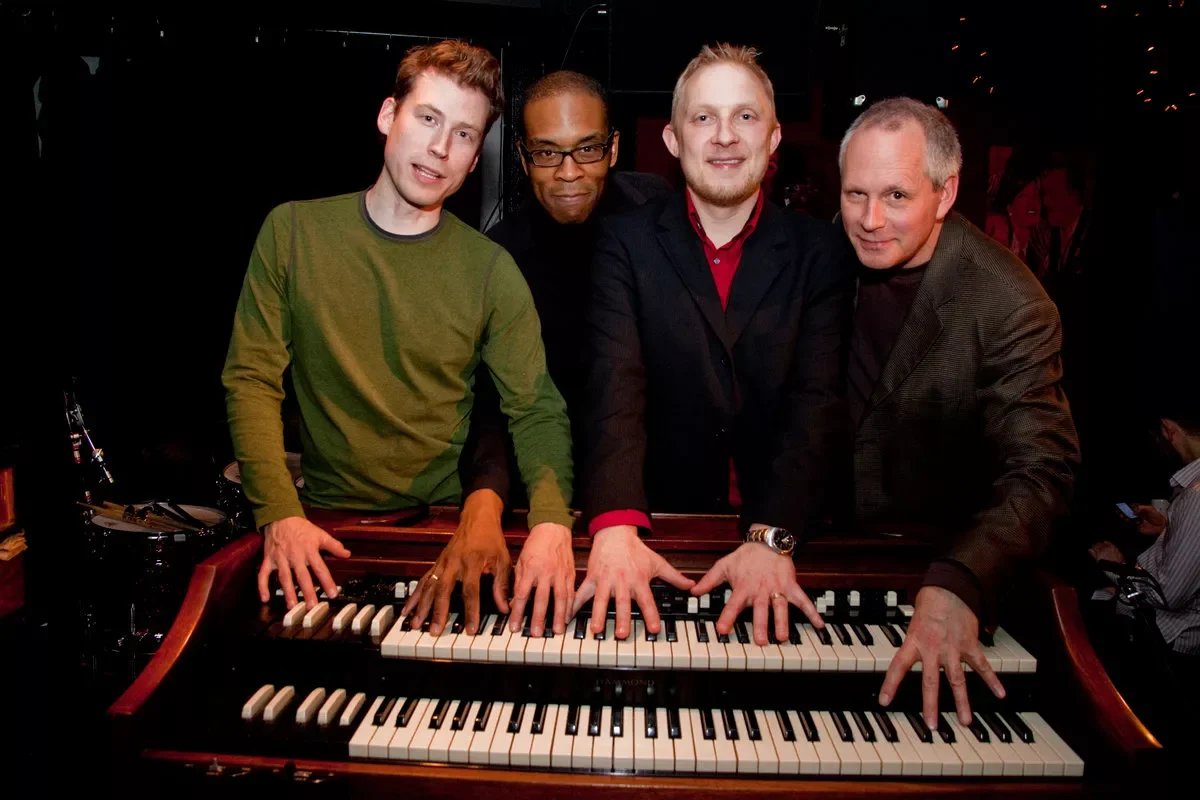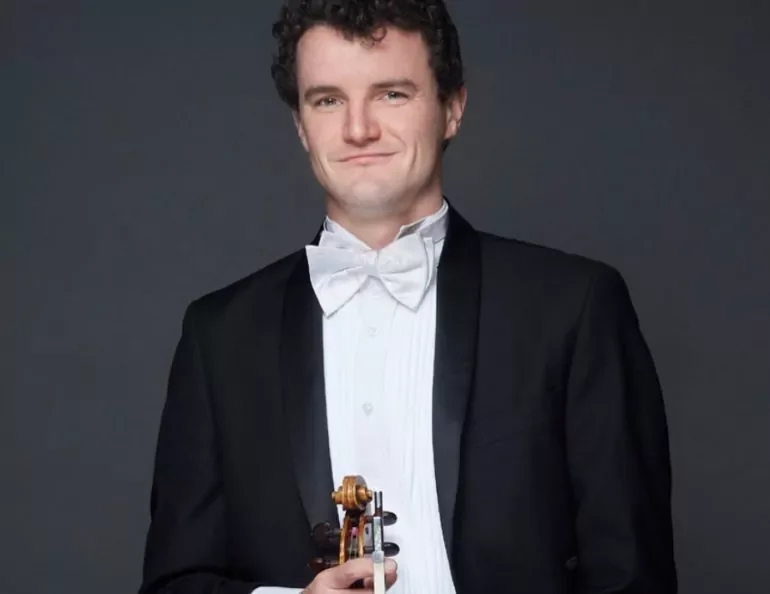Tabla master Zakir Hussain reconnects with his late father while strengthening cross-cultural ties
Appearing at Indian Summer Festival, the musician found happiness revisiting music of the past during the pandemic
Indian Summer Festival presents Zakir Hussain: Alone Together at 7 p.m. on Saturday, June 26.
FOR MASTER PERCUSSIONIST Zakir Hussain, the COVID-19 pandemic was both a worrying break in a busy life and a welcome opportunity to reconnect with family.
“Both our daughters joined us, and we created a bubble,” he reports from the Hussain home in San Anselmo, California, just a few miles north of the Golden Gate Bridge. “It wasn’t just me and my wife having to go out and do grocery shopping and all that; the young ones did most of that, and helped us out.”
It’s not that the 70-year-old musician faced a complete loss of work. After a relatively brief period of adjustment, “a lot of activities kicked in,” he says. “Virtual stuff started happening. I actually started, finished, and released an album [Is That So?] with my old-time friend John McLaughlin and a singer, Shankar Mahadevan, who’s a Bollywood singer. I did a couple of commissions, I taught on Zoom, I did Instagram activities…and I also did some work tracking on other people’s projects. And suddenly I ended up in Indonesia, doing a feature film—in a bubble, you know. So it just kicked in. A lot started happening, and it hasn’t stopped.”
Still, Hussain found time to commune with one family member who wasn’t available to cocoon with the rest: his late father Ustad Allah Rakha, a pioneer of Indo-jazz fusion and, for decades, the legendary sitarist Ravi Shankar’s right-hand man. Rakha was a self-made virtuoso, who ran away from home at 12 to pursue his love of music. In more traditional Hindustani fashion, Hussain learned from his dad—and, as he explains, he’s still learning, even though Rakha passed away in 2000.
The pandemic, he says, “allowed me to revisit a lot of the stuff that I haven’t paid any attention to over the past three or four decades—you know, polish my old shoes and put them back on again! And that has been happiness of a very high degree.”
Grateful Dead drummer Mickey Hart joins Zakir Hussain virtually in the concert at ISF.
More specifically, Hussain found time to revisit his early lessons. “I found myself re-analyzing stuff that I had learned from my father when I was a teenager, or even when I was like seven or eight years old,” he says. “I’ve been listening to those cassettes and looking at those notes. And then there’s his voice, and the way he describes things and uses analogies….In my younger days I was a little too distracted to be able to understand the depth of all that stuff. So I’ve always known this material, but I’m seeing shades in it that I’d never noticed before.”
Hussain will present a couple of his father’s tabla compositions—and his new and deeper interpretations of them—in Alone Together, the online concert he’ll present as part of the Indian Summer Festival, which runs online and at various Vancouver venues through July 17. The program will also look at a couple of his other major preoccupations: interacting with musicians from different cultural traditions, and mentoring younger players from the Indian subcontinent itself.
A casual scan of Indian media will reveal a concern for the survival of that region’s traditional music: many pundits contend that Indian classical music is largely ignored by the music industry, and that younger exponents of the form have little opportunity to advance themselves. Hussain, however, sees it differently: the music, he suggests, is adapting to 21st-century conditions while maintaining its core identity.
“What’s happening now with the younger Indian musicians is that they have grown up with this more universal outlook towards the music,” he says. “So if they’re practising a particular raga—like, say, a pentatonic-scale raga like Bhoopali—they know that people in Japan have pentatonic scales. People in the Middle East have pentatonic scales. People in Indonesia have gamelan orchestras, which have pentatonic scales….So does that mean that I should just keep my Indian pentatonic scales diligently and fanatically Indian, or should I, in my improvisations, be able to show different aspects of how Raag Bhoopali could be expanded upon, in a way where it still maintains its character but has a new story to tell?
“That’s what the young Indian musicians of today are doing,” he adds, citing bamboo flute player Rakesh Chaurasia, who’ll make a guest appearance as part of Alone Together, as an example. “And young Indian musicians of today are also well-versed in the modern technical aspect of the music—like using computers, using interfaces, using recording systems, knowing about microphones and how to use them. and also understanding harmony and counterpoint.”
As for cross-cultural collaboration, Hussain modestly points out that while he’s generally considered a pioneer of such activities, his father was actually one of the first in the field, most notably with his 1968 collaboration with jazz drummer Buddy Rich, Rich à la Rakha. One of Hussain’s most fruitful exchanges has been his long association with Grateful Dead drummer Mickey Hart, who’ll also join him in Alone Together. But he’s also had lengthy associations with the aforementioned John McLaughlin, banjo radical Béla Fleck, bassist and electrojazz composer Bill Laswell, and saxophonist Charles Lloyd. What’s made all of these projects work, he explains, has been respect.
With McLaughlin, for instance, he found an instantaneous rapport: at their very first meeting he and the fleet-fingered guitarist were able to play together with near-telepathic rapport. But for their work to go beyond inspired jamming, both had to learn to move closer to the other’s world. “The idea was to be able to walk in each other’s shadow,” Hussain says. “So for me to interact with him, I must give the respect to him of understanding the world that he comes from. And he did the same with me and with [violinist] L. Shankar, where he actually studied South Indian music, and North Indian music so when he sat down with us, he knew what we were all about.
“That’s also how I ended up learning the jazz forms and how to solo in them,” he adds. “So now, if we want to be at that table, using that buffet, we can do that. And if we just want to come to an Indian table and have a biryani, then we can do that too.”














